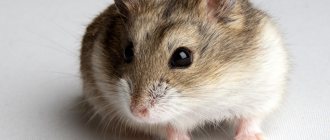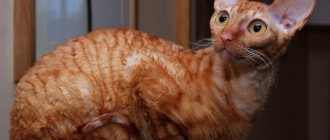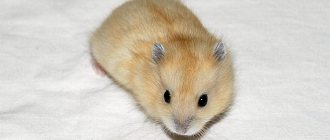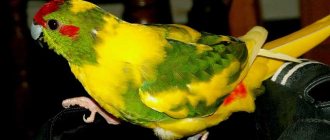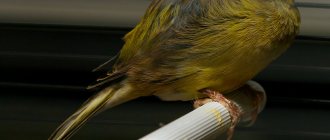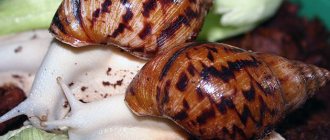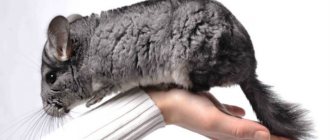Description of the breed
The Campbell's hamster is a small, agile animal that reaches a length of no more than 10.5 cm and weighs about 25 g. The head is small, round, the muzzle is pointed, the tail is short, thick hair covers not only the body, but also the soles of the paws. Wild animals are gray in color with a brownish tint, with a dark contrasting stripe running down the back. Hamsters living in captivity can vary in color from white to black. There are glands on the abdomen that animals use to mark their territory. In the corners of the mouth there are also special glands that perform several functions:
- - support immunity;
- - promotes better digestion;
- - help to mark food supplies.
For a long time it was believed that this is a subspecies of the Djungarian hamster, but since 1974 these animals have been classified as different species. Outwardly they are very similar, but there are also noticeable differences. Campbell has the following features:
- - there is no dark spot on the head,
- - the stripe on the back is clearly defined,
- - the villi located on the abdomen are colored gray at the base;
- - smaller ears;
- - does not hibernate in winter.
Recommendations for owners
Campbell's dwarf hamsters have very poor vision and perception of the world around them. Cataracts are also common in older hamsters. To compensate for this deficiency, they have many glands that are located on the face, on the cheeks, behind the ears and near the rectum.
Many owners notice that hamsters can clean and groom themselves in places that are unfamiliar to them. This is done so that their scent creates a trail that will allow them to find their way back to the hole. This behavior is possible for repeated visits to places with more food. Such scent trails can persist for up to eight days.
In addition to cataracts, hamsters can develop diabetes, glaucoma and tumors (both benign and malignant). Many benign and malignant tumors can be removed surgically.
Housing preparation
It is recommended to buy a spacious cage, the width of which is at least 60 cm and the length of 40 cm. But these are the minimum dimensions; in a larger cage, the hamster will have more room to run around. It is better to choose models with horizontal metal rods, the distance between which should be small so that the miniature hamster does not crawl out.
You definitely need to put a small house in the cage so that the animal can rest there and also store its supplies. It is better to buy a ready-made house at a pet store, but you can make it yourself from some wooden or cardboard box; a ceramic bowl with a broken edge is also suitable, but the edge should not be sharp so that the pet does not get injured. The cardboard box will have to be changed from time to time, as the hamster will chew holes in it. To prevent the hamster from getting bored, it is advisable to place a running wheel, various ladders and shelves in the cage.
Sawdust or a special filler, which is sold in a pet store, should be poured into the bottom of the cage. Paper napkins are also placed in the cage so that the pet can build a nest for itself. It is not advisable to put fabric scraps, straw and newspaper, since harmful printing ink is applied to the newspaper, and the hamster can become entangled in threads and straw.
A heavy container is selected for food so that the animal does not turn it over. Water poured into a saucer quickly spills and becomes dirty, so it is better to purchase a special drinking bowl that is attached to the wall of the cage and does not spill.
When the home is fully equipped, you can go for the hamster. To transport it, use a small cage 15 cm wide and 10 cm high. The size of the cells should not exceed 1.5 cm. This cage will be useful in the future if you need to take your pet to a veterinary clinic. As a last resort, you can transport the hamster in a box made of thick cardboard with small holes, but only if the journey is not too long (no more than 90 minutes), otherwise the animal will gnaw through the wall and crawl out. If the transportation will last more than three hours, then you need to put a small slice of bread or apple in the cage so that the hamster can eat.
Three rules for choosing a hamster
Rule 1 . It is better to buy a pet at a pet store or from specialists who professionally breed hamsters.
Rule 2 . You need to choose healthy animals. The well-being of a pet can be judged by several signs:
- - smooth, silky and thick coat without bald spots or bald spots;
- - moderate fatness;
- - when breathing, the animal should not wheeze, cough or sniffle;
- - ears, eyes and nose are clean without any discharge or crusts;
- - the hair near the tail is free of dirt.
Rule 3 . It is advisable to purchase young hamsters that are at least three and no more than seven weeks old. At this age, they already eat themselves and are quite independent. The issue of pair housing at home is controversial. Many believe that it is still better to keep them alone to avoid clashes and uncontrolled reproduction, since frequent childbirth weakens the female, and the babies can be born weak and sickly. But if you decide to keep a couple of pets at home, then it is better to purchase them at the same time, since at a young age they get used to each other better, and adult animals can start violent fights.
Characteristics of the Campbell hamster
| How long do Campbell hamsters live? | The lifespan of different individuals varies quite greatly. On average, a rodent lives from 1 to 2 years. At home, with proper care, a hamster can live longer. The maximum lifespan is up to 4 years. |
Breed color options | The most common:
The classic color of wild and most domestic species is agouti. In captivity, many representatives of the breed were bred with a wide variety of colors: from white (albino) to black, spotted, tortoiseshell, silver, satin and many others. |
How to stop a Campbell hamster from biting? | This subspecies is considered the most problematic in domestication. Be patient and be gentle with the animal. Biting is not just aggression. It is necessarily caused by one of the following reasons, which must be avoided:
In any case, hamster bites, although painful, are not dangerous. Treat the wound with hydrogen peroxide or brilliant green. You cannot scold, let alone shout at your pet. He is not stupid at all and is able to remember this for the rest of his life. Then you will definitely not be able to make friends with the rodent. |
How to choose the right pet? | It is better to purchase a Campbell hamster from a nursery or from a reputable breeder. Do not buy or take for nothing a sick animal, even if you feel sorry for it. This will only bring frustration to you and your family who has become attached to the pet. There is no need to purchase a rodent that is too old or, conversely, young. The best age is no younger than 3 weeks and no older than 3 months. When purchasing, pay attention to:
Tip: males are much calmer and easier to tame than females. The first thing you need to do after purchasing, especially if the animal was purchased for children, is to show it to the veterinarian. Remember that ordinary dwarf hamsters are often passed off as Campbell hamsters. Therefore, carefully study their differences. |
How to distinguish a Campbell hamster from a dwarf hamster? | The Campbell hamster in the photo and in life is very similar in appearance to the popular Djungarian hamster. They can be distinguished by the following criteria:
|
How much does a dwarf rodent cost? | On the domestic market, the price of a Campbell hamster ranges on average from 150 to 300 rubles per individual. |
Advantages of keeping the species:
- Attractive appearance.
- Small size: does not require a large cage or large food expenses.
- There is no unpleasant odor even if there are errors in the content.
- Does not require much attention: loves to be alone, which is convenient for busy owners.
Difficulties in keeping a hamster:
- It is difficult to comply with the conditions for keeping in a group.
- Not suitable for children under 12 years of age.
- A difficult and long process of taming.
- Aggressive: often bites and does not give in to hands. Some especially restive individuals have to be handled only with special gloves.
- It is nocturnal, so it makes noise at night.
- Does not tolerate change of environment well.
The Campbell hamster is considered the most aggressive of the dwarf breeds. It is very difficult to tame or at least gain trust. Khomka does not like it when people pick him up and try to get into his home. Expresses dissatisfaction with attacks and painful bites. The subspecies is more suitable for observing the life of hamsters from the outside.
Lifestyle
In the wild, Campbell's hamsters usually live in small groups. There is a leader in the group, he dominates the others and demands unquestioning obedience. If a skirmish occurs, the ordinary hamster stands on its hind legs in front of the leader, demonstrating obedience.
They live in shallow burrows. For relaxation, a cozy nesting chamber is set up, which is lined with dry leaves and grass. There is also a pantry where grains and seeds are stored. Several exits break out of the hole at once, so that you can hide in case of danger.
In the evening, hamsters usually leave their burrows and go out in search of food. The menu consists of both plant and animal foods. The animals feast on the seeds and berries of various plants, and also catch small insects and larvae.
In winter, they do not hibernate, but hide in burrows and eat supplies from the pantry. The Campbell's hamster does not exhibit torpor in case of hypothermia, which is observed in other types of hamsters.
What to feed Campbell?
Hamsters are not picky eaters. They readily eat wheat, peas, oats, lentils, corn, and sunflower seeds. It is better to give a mixture of grains so that the diet is varied and balanced. It is convenient to purchase ready-made mixtures for hamsters at a pet store, since the seeds in them are selected in the right ratio and enriched with vitamins. Ready-made food mixtures are sold not only in the usual bulk, packed in a box, but also in the form of sticks that can be hung from the top wall of the cage. This food is convenient because it does not crumble along the bottom of the cage, and the animal is interested in gnawing the grains gradually.
A necessary component of the diet is fresh vegetables and fruits . You can give carrots, zucchini, pumpkin, cucumber, beets, apples, bananas, grapes, watermelon, raspberries, peach, strawberries, raisins.
It is useful to include fresh dandelion leaves, clover, lettuce, as well as parsley and dill in the menu. Animals will also be happy with sprouted wheat, which contains many substances that are beneficial to the pet’s health. You can put dry wheat ears and small cherry, birch and apple twigs in the cage. Clover and dandelion leaves should be plucked from areas where lawns have not been treated with chemicals.
Since in nature animals eat not only plant foods, but also animals, the menu at home needs to be supplemented with protein animal foods. Pets are offered boiled chicken meat, fish, liver; you need to choose low-fat pieces and do not salt them during cooking. It is also recommended to give milk, low-fat varieties of cheese and cottage cheese, and yogurt. You can give milk oatmeal or semolina porridge, but not more than twice a week.
It is necessary that the cage contains a special mineral stone, which consists of salt and chalk, which are important for the health of the hamster. In winter, when there is little fresh food, the animals are given vitamins, which are sold in pet stores. To ensure that vitamins get into your pet’s body, the tablets can be crushed and sprinkled with the crumbs on the food.
Hamsters usually drink little, but fresh water must be in the cage. Do not pour tap water into the drinking bowl. You need to take clean filtered or boiled water, which it is advisable to change at least every two days.
A healthy, active animal eats approximately 5 times a day. There is no need to give too much food, especially for fatty foods - sunflower seeds, cheese, meat, cottage cheese. You also need to remove excess food in a timely manner, otherwise it will spoil and the hamster may get poisoned.
There are a number of foods that should not be given to your hamster, otherwise it will have digestive problems. You need to exclude cabbage, onions, citrus fruits, almonds, pine nuts, tomatoes, persimmons, kiwi, peanuts, and garlic from your diet. You should also not give chocolate, sweets and all salty, sweet, fried and smoked foods.
Reproduction
The breeding season for Campbell's hamsters usually lasts from spring to early autumn. During these few months, the female can give birth to cubs several times. But this is undesirable for pets, as it weakens the female. To get healthy offspring, hamsters must be at least three months old and no more than a year old, they must be active and healthy.
If the hamsters previously lived separately, then they need to get used to each other. A metal mesh partition should be placed in the cage and the hamsters should be placed on opposite sides. This way they can get to know each other, smell each other, but will not fight. When the animals get used to each other, the partition can be removed.
Later, the male will need to be separated from the pregnant female. During this period, the female needs a more nutritious diet; it is recommended to give her more protein foods - boiled chicken, cheese, cottage cheese, milk.
Pregnancy lasts from two to three weeks. You need to put things in order in the cage in advance and change the filling so that after birth you do not disturb the female and the cubs. Perhaps you need to buy a new, larger house so that the family does not feel crowded, or put out a cardboard box with paper napkins.
After giving birth, you should not disturb hamsters, and you should also not pick up the babies, otherwise the female will smell a different smell and may abandon the babies.
Usually between 2 and 12 cubs are born. They are born blind and bald, but with small teeth. On the 5th day, their fur grows, and their eyes usually open on the 10-15th day, at the same time the hamsters begin to feed on their own. The cubs grow very quickly, and when they are three weeks old, they can already be placed in a separate cage.
Little hamsters are very funny and active, they often start games and do not show aggression, unlike adult animals.
Activity
Under natural conditions, hamsters sleep in their burrows during the day, and at dusk they climb out and go in search of food. They adhere to approximately the same way of life in captivity - during the day they sleep in a house, and in the evening and at night they walk around the cage, study the contents of their feeder, run in a wheel and climb ladders. If several hamsters live in a cage at once, they often start games and fights. So at night, hamsters can make a little noise and interfere with sleep.
Taming Recommendations
Campbell's hamsters are not very easy to tame, but if you are patient, the pet will get used to it, will not be afraid of your hands and will become trusting. It needs to be trained from childhood, since adult hamsters cannot be tamed. You need to remember that your pet should not be frightened by sudden movements and loud sounds. First, you need to talk quietly and calmly with the animal so that it gets used to the voice and is not afraid.
Young hamsters that are 20 days old are suitable for taming. The pet is taken very carefully in the palm; at this age, he is not yet capable of biting painfully, and if he pinches him slightly, there is no need to jerk his hand back sharply and scream. A young hamster needs to be picked up every day, then he will gradually get used to it and will not be afraid.
Hamsters are not difficult to keep; even those who have never kept pets can cope with caring for them. But it is not advisable for children under 12 years of age to have a hairy hamster. Since these animals are very miniature and mistrustful, if they are handled carelessly, they can suffer themselves and bite their owner.
Additional attributes
To keep this breed in a cage, it is necessary to install a feeder, a drinker and other accessories for an active lifestyle: a wheel, a ladder, etc.
Feeder and drinker
It is best to use a feeder made of a heavy material, such as ceramic. This way, an active hamster will not be able to turn it over. You can use a regular metal lid.
The same applies to the drinking bowl. The animal needs to change the water daily. The rodent must have constant access to clean and fresh water, so the best option is an automatic drinking bowl. It does not clog, and the water in it always remains clean and fresh.
Decorative house
Another important attribute is a miniature house in a cage. It can be used as a nesting site for the female. The best option would be a plastic or plastic construction. Under no circumstances should a wooden house be used. In a very short time the rodent will simply gnaw it out. To create your own nest, you can offer the animal pieces of white paper or napkins, dry hay and small wood chips.
In fact, a house is not a prerequisite for keeping these pets. But if you install it, the animal will be grateful. In this design, babies not only give birth to offspring, but also hide food for future use.
Wheel for mileage
This is one of the most important attributes of any rodent’s home. It is necessary to use an object with a smooth surface to avoid injuring the rodent’s paws. The larger the diameter of this item, the better. This increases the activity of the hamster, which means that the risk of obesity and a shortening of its life is eliminated.
Toilet installation
You can also install a toilet in the cage, although this is not necessary. A tray with purchased sand is necessary for bathing a rodent. It is better to use sand from a pet store: it does not contain any harmful bacteria. It is strictly forbidden to bathe a rodent in water, since such procedures will simply kill it.
Another very important prop that should be present in the cage is a mineral stone. It is designed to grind down your pet's ever-growing teeth.
Care and maintenance
To keep your animals comfortable, it is important to keep their cage clean. The bottom should be covered with sawdust or special filler. It is advisable to change sawdust once a week. This type of hamster does not pollute the litter too much, so it should not be cleaned more often; there will be no unpleasant odor. When cleaning, it is recommended to add a handful of the previous filler to clean sawdust so that the pet feels a familiar smell and does not worry.
All hamsters love to store food supplies. They constantly bring grains and fruits to their house. It is necessary to remove food deposits from time to time, but a small part of the supplies should be left so that the pet does not get nervous.
Hamsters react painfully to drafts, so the cage should not be placed near an open window or on the balcony. Direct sunlight is also undesirable; if pets overheat, they may die.
You should not bathe your hamster, as he may catch a cold and become seriously ill. If it gets too dirty, you can gently brush the fur with a damp toothbrush.
Breed diseases
Campbells are vulnerable to various infectious diseases. It is a rare hamster that has never had a cold in its life. It is not recommended to treat your pet yourself. At the first signs of illness, it is better to take the animal to the veterinarian. In addition to colds, hamsters often suffer from tumors. To save the poor people from such diseases, they just need to get rid of chips, crackers and other similar products. Rodents are also prone to polycystic disease (infertility) and diabetes - melon, watermelon and other sweet fruits are prohibited.
